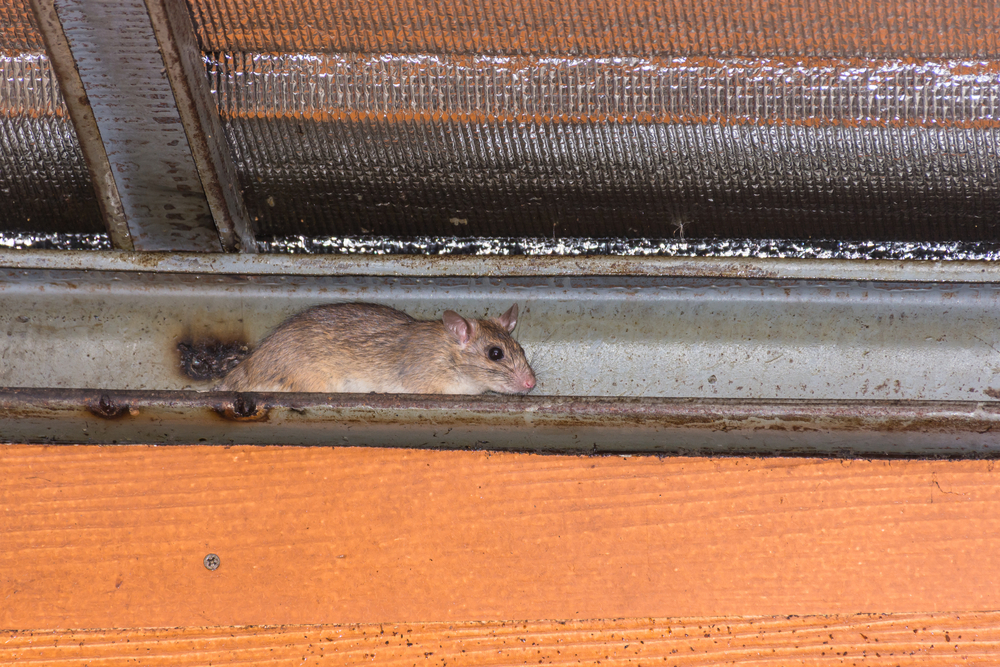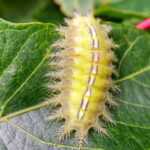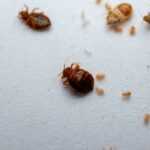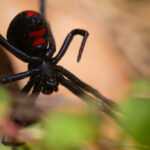Roof Rats How to Spot & Stop Them Fast at Home
Learn how to identify roof rats and protect your home from damage with easy, effective tips. Keep your space safe and rat-free today!
Effective Ways to Get Rid of Roof Rats and Keep Them Out
Roof rats are agile climbers and common pests that damage homes and pose serious health risks. Learn to identify roof rats, understand the dangers they bring, and discover effective removal methods to protect your property.
- These rodents, also known as ship rats or palm rats, are smaller and more agile than Norway rats, with smooth fur and long, scaly tails. Their skilled climbing ability allows them to nest in high places such as attics, dense vegetation, and trees, making early identification critical for effective management.
- Common signs of a roof rat infestation include roof rat droppings, gnaw marks, greasy rub marks, and nighttime scurrying noises, which should prompt immediate inspection and action to prevent property damage and health risks.
- Effective strategies for controlling and preventing roof rat infestations include trapping with snap traps or electronic traps, proper food storage in sealed containers, sealing entry points, maintaining yard cleanliness, and utilizing natural predators to keep the rat population in check.
Identifying Roof Rats
Also known as black rats or ship rats, roof rats are commonly found worldwide, especially in tropical regions and coastal states. Differentiating them from other rat species, such as the larger brown rat (Norway rat), helps in managing and preventing infestations effectively. These rodents are smaller and sleeker, making them highly adaptable and skilled climbers, often nesting in the upper parts of buildings. Identifying their distinct physical characteristics, behaviors, and nesting preferences aids in early detection and prompt action.
Understanding how roof rats live and behave is essential in preventing infestations and reducing roof rat activity around your home.
Physical Characteristics
Adult roof rats are generally smaller than Norway rats, with a body length ranging from 6 to 8 inches, and their tails can measure between 7 to 10 inches, often longer than their bodies. They typically weigh between 5 to 9 ounces, although some can reach up to 12 ounces.
Large ears, a narrow pointed snout, and a hairless, scaly tail make these rats easily distinguishable from other rat species. Their smooth fur can be black or brown, contributing to their sleek appearance. Notably, their pointed nose and large ears are key identifiers that set them apart from their Norway rat cousins.
Behavior
Primarily nocturnal creatures, roof rats are most active during the night. This nocturnal behavior helps them avoid predators and human activity while they forage for food. These rodents are omnivorous and food hoarders, attracted to a wide variety of food sources. They are highly adaptable and skilled climbers, often navigating trees, power lines, and high structures with ease.
They prefer to nest in elevated areas like attics, dense vegetation, palm trees, and fruit trees, which provide safety and easy access to food sources. Recognizing their behavior helps identify infestations and implement effective control measures.
Nesting Preferences
Roof rats prefer to build nests in the upper parts of buildings, such as attics, rafters, and soffits, where they feel secure and have ample access to resources. Outdoors, they commonly live in dense vegetation, wood piles, palm crowns, and fruit trees, which offer both food and shelter. In some tropical regions and dry environments, roof rats may also create shallow burrows near structures.
Knowing these nesting preferences helps homeowners identify potential nesting sites and take preventive measures to prevent roof rat infestations.
Signs of a Roof Rat Infestation
Recognizing the signs of a roof rat infestation early can prevent extensive damage and health risks. Common indicators include roof rat droppings, gnaw marks, greasy rub marks, and noises. Roof rat droppings are small, dark, about 0.5 inches in length, and pointed at both ends, usually found in secluded areas like attics and garages. Gnaw marks on food packages, structural materials, or electrical wires also signify roof rat activity. Additionally, the scurrying noises heard mostly at night are a telltale sign of their presence.
Awareness of these signs allows for prompt action to address the infestation. Early detection can save you from the health hazards and property damage associated with these rodents.
Roof Rat Droppings
Roof rat droppings are a definitive sign of their presence. These droppings are small, about half an inch long, dark, and pointed at both ends. They are often found in secluded areas such as attics, garages, behind appliances, or near food sources where roof rats feel secure.
These droppings indicate roof rat activity and highlight potential nesting sites and nearby food sources.
Gnaw Marks and Greasy Rub Marks
Gnaw marks are another clear indicator of roof rat activity. These marks can be found on food packages, wooden structures, and electrical wires, where the rats chew to access food or create nesting sites. The gnawing often leaves rough, irregular edges on the surfaces, easily distinguished from wear and tear. Greasy rub marks along walls, beams, and other surfaces also indicate frequent travel routes.
Early identification of these marks helps pinpoint active areas and take necessary control measures.
Noises
The sounds of scurrying or scratching are most commonly heard at night, as roof rats are primarily nocturnal. These noises often indicate that they are on the hunt for food or moving within walls and ceilings.
Such sounds strongly indicate an infestation, warranting a thorough inspection of your home for other signs of roof rat activity.
How Roof Rats Enter Homes
Roof rats are agile climbers that can enter homes through small openings around windows, vents, gaps in the roofline, and even through power lines and tree branches. Their ability to squeeze through openings as small as a quarter of an inch makes it crucial to seal even the tiniest gaps to prevent them from gaining entry. Removing clutter and maintaining cleanliness around the home can also deter them from establishing nests.
Knowing how roof rats enter homes helps in blocking entry points and reducing infestation risks.
Entry Points
Roof rats can fit through openings as small as a quarter of an inch, so sealing even the smallest gaps around your home is vital. They commonly gain entry via vents, gaps in siding or roofing, and around windows.
Power lines and tree branches often serve as pathways, so inspecting the roof and eaves for vulnerable spots is necessary. Blocking these entry points with materials like wire mesh, metal flashing, and sealant can effectively prevent entry.
Food Sources That Attract Roof Rats
These omnivorous food hoarders are attracted to a variety of food sources, including fruits, vegetables, nuts, seeds, berries, and human food. They are stealthy foragers, often seeking food at night, and will raid bird feeders if accessible. Roof rats store nuts and seeds in their nesting spots for later consumption.
Droppings are usually found near food sources and entry points, serving as a sign of their presence. Keeping food stored properly in sealed containers and eliminating accessible food sources can significantly reduce the likelihood of an infestation.
Dangers Posed by Roof Rats
Roof rats pose significant dangers to both health and property. They are known to spread diseases that can affect humans and pets, such as salmonella, leptospirosis, and rat bite fever. Contact with droppings, urine, or saliva can lead to serious respiratory diseases, joint pain, and other health issues. Additionally, infestations can result in property damage, including electrical fires from gnawed electrical wires and compromised structural integrity from chewing on wooden beams and insulation.
Understanding these dangers underscores the importance of managing the roof rat population effectively.
Disease Transmission
Roof rats can carry and spread several diseases, including salmonella, leptospirosis, and rat bite fever. Their droppings and urine pose significant health risks as they can contaminate food and water sources, leading to food poisoning and other illnesses. Bites can transmit bacteria and may lead to rat bite fever, which includes symptoms such as joint pain. They may also carry other disease-causing pathogens.
Understanding these health risks is critical in highlighting the need for effective control measures.
Property Damage
Roof rats can cause extensive property damage, particularly through their chewing habits. They gnaw on wooden beams, insulation, and electrical wires, which can compromise the structural integrity of homes and pose fire hazards. They have a constant need to chew to keep their teeth from growing too long, often resulting in noticeable chew marks on various materials.
Addressing infestations promptly can prevent significant damage and costly repairs.
Effective Methods to Get Rid of Roof Rats
Eliminating roof rats requires a combination of methods, including trapping, baiting, and professional pest control. Trapping is often the fastest and most effective way to reduce the roof rat population, especially when combined with sealing entry points and eliminating food and shelter sources. Using traps and baits strategically around the property can enhance prevention efforts.
Professional pest control services can also provide specialized methods for severe infestations, ensuring long-term solutions. Understanding the various methods available can help you choose the most suitable approach for your situation.
Trapping
Various traps can be used to catch roof rats, including snap traps, live traps, and electronic traps. Snap traps are particularly effective and should be placed in areas with roof rat activity, such as where droppings or gnaw marks are found.
The advantages of using snap traps include their effectiveness, speed, and ability to provide a humane kill. Electronic traps offer a non-toxic, humane alternative by delivering a high-voltage shock to quickly kill the rat. Professionals may use a combination of traps, baits, and exclusion methods tailored to the specific situation.
Baiting
Baiting is another effective method for controlling roof rats. They are attracted to food sources such as pet food, fruits, and improperly stored human food.
Enclosed, tamper-resistant bait stations can safely deliver poison bait while minimizing risks to pets and children. Placing bait stations near activity signs can enhance their effectiveness.
Preventing Future Roof Rat Infestations
Preventing roof rat infestations is key to keeping these rodents out of your home. Eliminating food and water sources is crucial for managing infestations. Sealing potential entry points, maintaining a clean yard, and encouraging natural predators are effective strategies to prevent roof rats from gaining access to your home. Regular inspections and maintenance can also help deter these pests and ensure your home remains pest-free.
These preventative measures offer long-lasting protection against roof rat infestations.
Sealing Entry Points
Sealing entry points prevents roof rats from entering your home. These rodents can squeeze through openings as small as half an inch, roughly the size of a nickel. Inspect your home for gaps around windows, vents, and the roofline, and use materials like wire mesh, metal flashing, and sealant to block these entryways.
Regularly checking and maintaining these seals ensures they remain effective in keeping roof rats out.
Yard Maintenance
A tidy yard effectively deters roof rats. Prune tree branches, trim palm trees, remove vines, and thin out bushes to create a less hospitable environment for these rodents. Removing dense vegetation and keeping your yard clean can significantly reduce the likelihood of roof rats using it as a nesting site.
Regular yard maintenance creates an environment less appealing to roof rats.
Natural Predators
Natural predators, such as owls and hawks, help control the roof rat population. Installing birdhouses and preserving natural habitats can attract these predators to your area, providing a natural method of pest control.
Natural predators keep roof rat populations in check, making their presence an effective long-term strategy.
The Importance of Sanitation
Proper sanitation is a critical aspect of preventing roof rat infestations. Maintaining cleanliness in and around your home reduces attractiveness by eliminating essential food and water sources. Keeping garbage bins covered and secured, regular disposal of trash and recycling, and managing compost piles can significantly lower the risk of attracting roof rats.
Implementing these sanitation practices not only helps in preventing infestations but also contributes to overall household hygiene.
Food Storage
Storing food properly is crucial in preventing attraction. Food, including pet food, should be kept in sealed containers to prevent access. Garbage bins should have tight-fitting lids to deter roof rats, and regular disposal of trash and recycling is essential.
Implementing these food storage and garbage management practices significantly lowers the risk of roof rat infestations.
Water Sources
Eliminating standing water and fixing leaks is crucial to deprive roof rats of necessary hydration. Addressing leaks and removing standing water reduces access to hydration, making your home less appealing.
Removing potential water sources creates a less hospitable environment, reducing roof rat infestation risks.
Roof rats are a significant threat to both health and property, making it essential to identify, eliminate, and prevent infestations effectively. Recognizing the physical characteristics, behaviors, and nesting preferences can aid in early detection. Being vigilant for signs, like roof rat droppings, gnaw marks, greasy rub marks, and noises, is crucial in identifying an infestation early. Understanding how roof rats enter homes and the dangers they pose underscores the importance of prompt and effective control measures.
Implementing a combination of trapping with snap traps or electronic traps, baiting, and professional pest control, along with preventive measures like sealing entry points, yard maintenance, and fostering natural predators, can help manage and prevent roof rat infestations. Maintaining proper sanitation by managing food preparation surfaces, food storage, and water sources further reduces the attractiveness of your home to these pests. By taking these proactive steps, you can protect your home and ensure a safe and comfortable living environment.
Frequently Asked Questions
What are the common signs of a roof rat infestation?
Common signs include small, dark droppings with pointed ends, gnaw marks on food packages and materials, greasy rub marks along walls and beams, and the sound of scurrying noises primarily at night. Recognizing these signs early can help prevent further damage and control the infestation effectively.
How do roof rats enter homes?
Roof rats typically enter homes through small openings around windows, vents, gaps in the roofline, and by traveling along power lines and tree branches. Ensuring these entry points are sealed is essential for prevention.
What diseases can roof rats spread?
Roof rats can spread diseases including salmonella, leptospirosis, and rat bite fever, primarily through their droppings, urine, bites, and contamination of food preparation surfaces. It’s crucial to manage infestations promptly to reduce health risks.
What are effective methods to get rid of roof rats?
Effective methods include using snap traps or electronic traps, bait stations, sealing entry points, and in cases of severe infestations, hiring professional pest control services. Prompt action helps keep your space pest-free.
How can I prevent future roof rat infestations?
Prevent future roof rat infestations by sealing all entry points, keeping your yard tidy, managing food storage and water sources, and encouraging natural predators like owls and hawks to control the population naturally.



